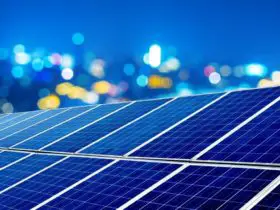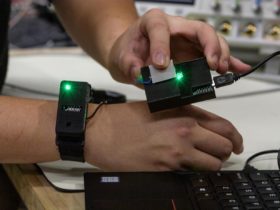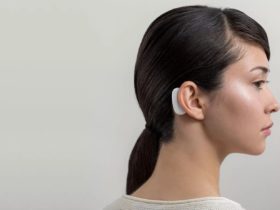Engineers at the University of Queensland in Australia have made a breakthrough on solar PV technology that could possibly turn any flat surface into a solar generator.

The team, led by Prof. Lianzhou Wang has been working with nano-particles known as quantum dots that can generate an electrical current and pass electrons when exposed to solar energy.
Also Read: Can a Solar Panel Charge a Power Bank? Choose the right charger.
They’ve been able to suspend the dots in a material that can be 3D-printed and applied to a surface or flexible sheet, turning it into a prompt solar cell.
“The new class of quantum dots the university has developed are flexible and printable,” Prof. Wang said.
“This opens up a huge range of potential applications, including the possibility to use it as a transparent skin to power cars, planes, homes and wearable technology.”
Prof. Lianzhou Wang and fellow researchers further added that their new solar PV technology has broken global records for energy conversion efficiency as previous work using quantum dots has managed to generate an energy efficiency of 13.4%, while the new record set by Prof. Wang and fellow researchers is 16.6% and they are trying to increase it to 20%.
“Our new record is 16.6 percent, a 3.3 percent jump on the previous figure, a nearly 25 percent improvement,” Prof. Wang added.
The energy efficiency of a solar PV cell is the rate at which it converts sunlight into electricity.
“Because the quantum dot solar cell can make better use of the high-energy solar energy, it can in reality generate double the efficiency of a traditional silicon solar cell,” he said.
“And because it can be easily printed it will be a lot cheaper, and because of its flexibility it can be used for purposes which you cannot use a typical flat solar panel.”
Prof. Wang said the benefits of this technology compared to traditional solar cell technology included it being lightweight, flexible, and able to work in a weaker light, such as on cloudy days or under indoor lighting. Solar energy can be used to power many products. And this solar technology could have the potential to be used as a transparent skin to power devices including smartphones, electric vehicles, and applied to windows and other surfaces.
Also Read: Can Solar Energy Be Stored?
Prof. Wang said the team was working with the industry to extend the experiments to a commercially viable model, which will take at least 3-5 years according to his predictions. Since quantum dots could also emit light, a side channel of the research was in using the quantum dot material as a light source, with the material a potentially self-sustaining light for outdoor use, among other uses.
Quantum dots that produce no electric charge but only light are already used in modern high-end TVs, which are referred to as having “QLED” displays.
“Our immediate target is to try to further break the world record in this category,” Prof. Wang added.
The team’s work was supported financially by the Australian Research Council’s Discovery Programs and the research has been published in the Nature Energy journal.




![Types of Engineers and What they Do [Explained]](https://www.engineeringpassion.com/wp-content/uploads/2022/04/types-of-engineers-and-what-they-do-280x210.jpg)








2 Comments